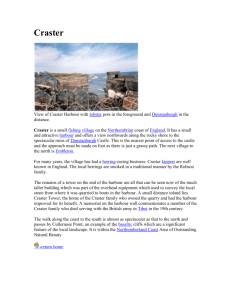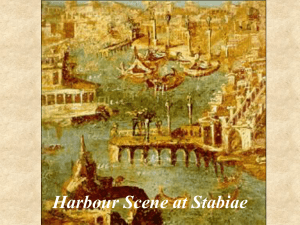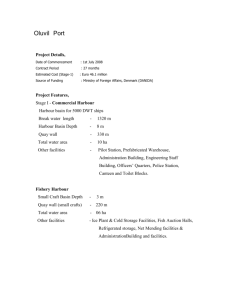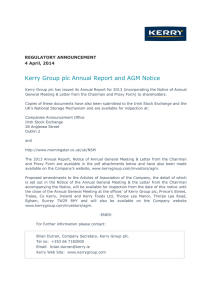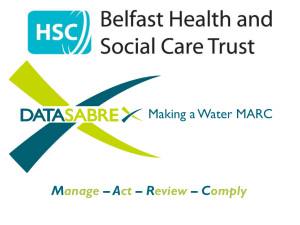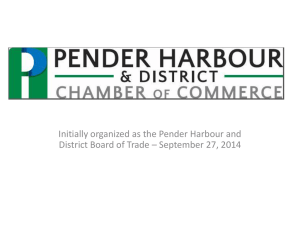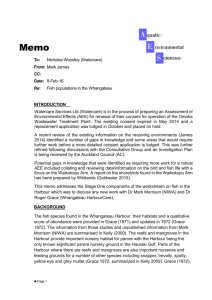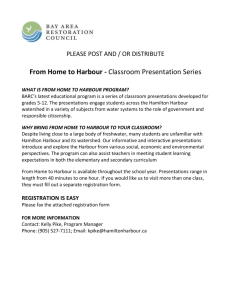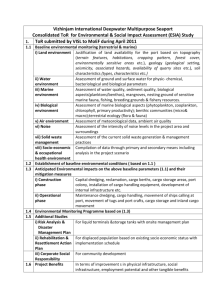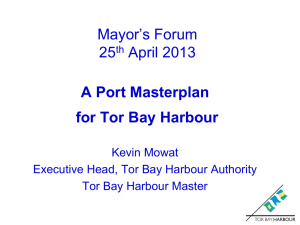SEA-PT & Harbour Plans
advertisement
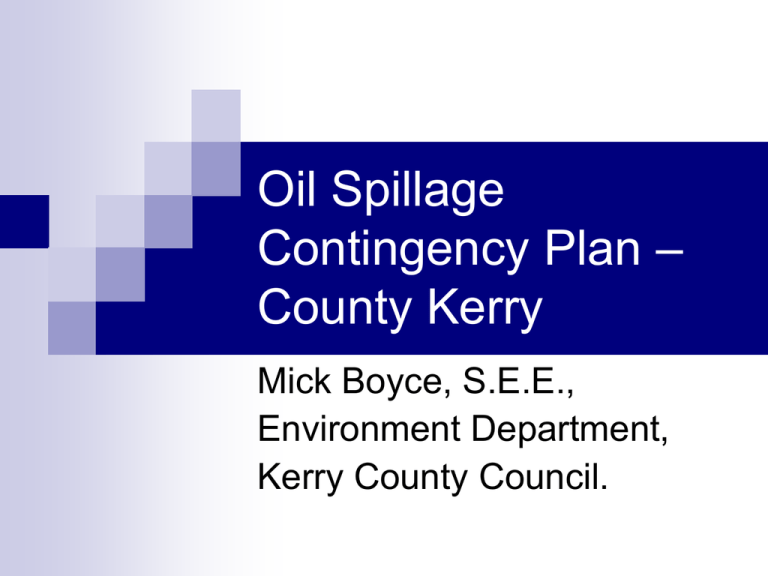
Oil Spillage Contingency Plan – County Kerry Mick Boyce, S.E.E., Environment Department, Kerry County Council. Thanks to : Conor Culloo; Vincent Hayes; SEA-PT (Hugh Conlon). Incidents (Kerry) : Ranga (1980) – Slea Head; Celestial Dawn (2002) – Dingle Harbour; Fidelma (2002) – Inish na bro (Blaskets). Purpose of the Plan : A guide to aid in the coordination of response to a marine-based Oil/HNS incident; To guide responders through the actions and decisions required to mount an effective response to a marine-based Oil/HNS incident; A guide to limit/mitigate the effects of such an event. Background Context : Legal requirement to produce appropriate plan (Sea Pollution Act); Number of marine-based incidents around the coast of Kerry; SEA-PT and Harbour Board plans already in place. Background Context (Contd.) : County Oil Pollution Officer [COPO] in place (me!) – appointed by Manager’s Order; Large KCC stock-pile built up over many years (TVH); Members of SEA-PT; In-house experience (previous incidents, training etc.) Plan preparation options: Outsource; In-house. Decision criteria : Budgetary considerations; Data gathering/local knowledge; Availability of in-house knowledge and expertise; Use of standard IRCG format (generic format and data). Final Decision : In-house Initial Stages of Plan preparation : Staff member assigned to prepare the plan; In-house group established to oversee the project ; Internal and external consultations (state agencies and departments, NGOs etc.) - limited response; Data gathering (assets at risk etc.); Literature review (availability of generic material). Format : standard IRCG template; Coverage : coastline (seashore) within the functional area of Kerry County Council (excluding SEA-PT and Harbour Board areas); Preparation timeframe : approx. 3 months; On-going review by implementation group during period of preparation of plan; Submission of various drafts to IRCG.; Approved by IRCG in May, 2012; Lifespan : 5 years; Annual up-date/review. Main Elements of the Plan Part 1 - Strategy Relationship with other plans : SEA-PT & Harbour Plans; Major Emergency Plan etc. Roles & Responsibilities (including Internal command structure): Local Authority (Shoreline Response); IRCG etc. Risk Assessment : Sensitive Coastline (SAC, SPA, Shellfish, Blue Flag...); Marine traffic (fishing, leisure, commercial traffic etc.); Wide variation in coastline types; Tourism reputation etc. Response Strategies and Plans : What are we dealing with (classification : type of Oil/HNS)? How much (quantification)? How will it behave in the marine environment (fate and likely destination)? How might we deal with it (containment and recovery options)? Tiered Response : Tier 1 : Background and minor operational spills resulting in shoreline pollution which can be dealt with by the relevant local authority or harbour authority. Tier 2 : Small-scale incidents where local authority may require mutual aid in order to initiate and maintain a shoreline response Tier 3 : A large spill where substantial further resources may be required and support from national government is necessary through the implementation of the National Contingency Plan (NCP). Training & Exercise Policy : What training is to be undertaken (SEA-PT exercises, IRCG courses); Training records. Scenarios Part 2 - Actions Response procedures : Plan activation; Notification formats (who to contact, when and how). Health & Safety : Risk assessments; Safe work procedures, Safety Data Sheets etc. Waste Management : Options for waste minimisation (eg. removal of debris etc.); Identification of potential temporary storage sites etc. (technical amendment to landfill licence.); Details of waste contractors etc. Part 3 – Data Directory Contact Directory : Current contact details for all relevant people and organisations etc. Resource Directory : Inventory of equipment etc. Part 4 – Cost Recovery Insurance Options : P & I Clubs, Standard Insurance Policies etc. Financial Control : Record keeping (what costs are being incurred and on what basis); Procurement procedures (eg. materials, plant & equipment etc.). Part 5 – Annexes Includes : Copies of neighbouring plans; Shoreline Protection Strategy (1997) – site-specific booming plans etc. Issues : Time-consuming; Approval by IRCG; On-going review (keep up-to-date); Designation of COPO & Deputy COPO. General Issues : Large document; Do neighbouring plans talk? One national plan versus plethora of county/harbour plans? 24-hour response? Training? Inland incidents Regular occurrences; Separate (shorter) emergency response procedures. Short (16 pages); o Drinking Water Incident Response Plans; o “A Field Guide to Inland Oil-Spill Clean-up Techniques” – CONCAWE (1983); o Need for national guidance! o Thank You
